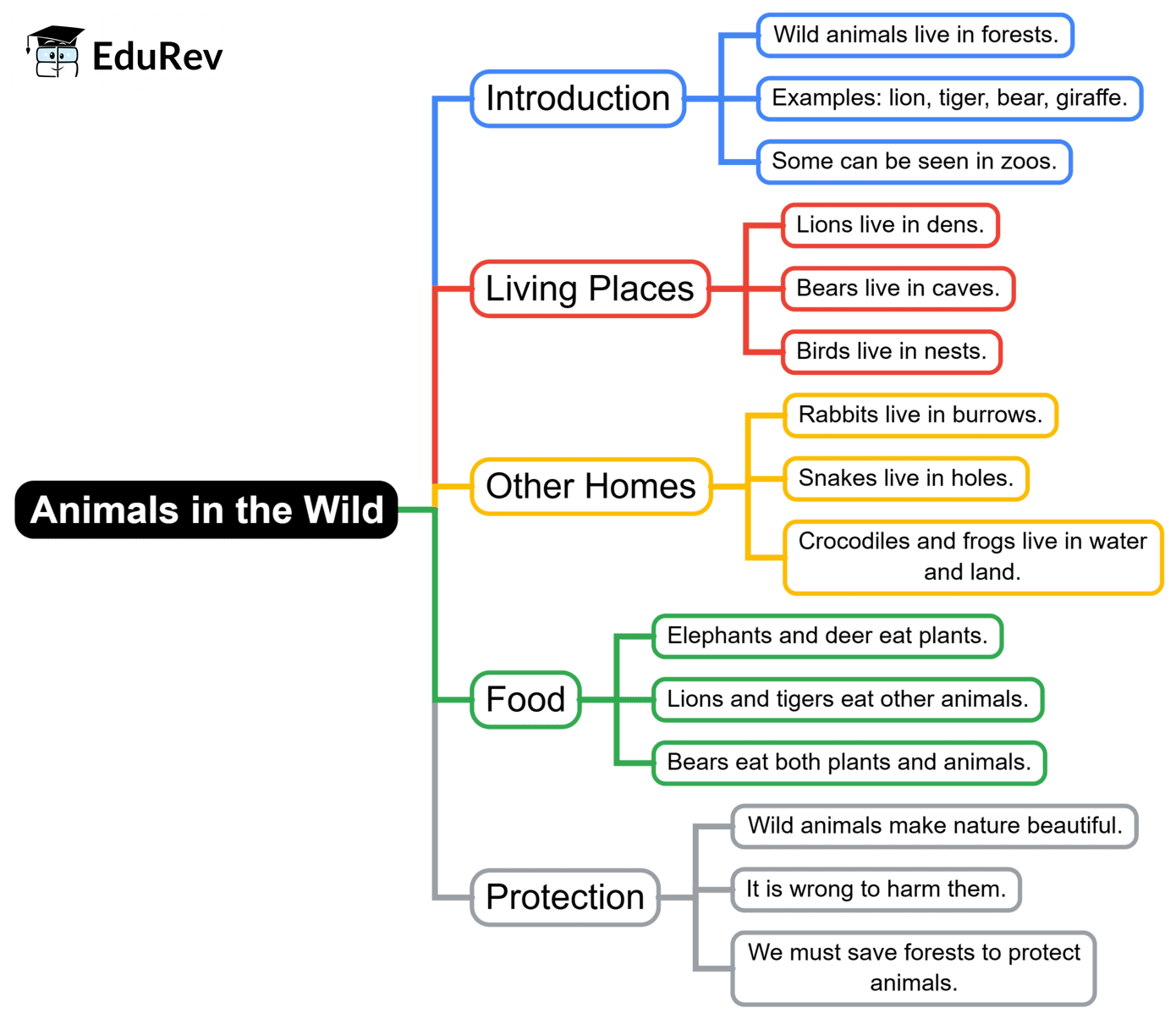Class 2 Exam > Class 2 Notes > Science for Class 2 > Mind Map: Animals in the Wild
Mind Map: Animals in the Wild | Science for Class 2 PDF Download

The document Mind Map: Animals in the Wild | Science for Class 2 is a part of the Class 2 Course Science for Class 2.
All you need of Class 2 at this link: Class 2
|
13 videos|142 docs|24 tests
|
FAQs on Mind Map: Animals in the Wild - Science for Class 2
| 1. What are some common animals found in the wild? |  |
Ans. Common animals found in the wild include mammals like lions, tigers, elephants, and deer; birds such as eagles, owls, and sparrows; reptiles like snakes and lizards; and amphibians such as frogs. Additionally, there are numerous insects and marine animals that inhabit various ecosystems.
| 2. How do wild animals adapt to their environment? |  |
Ans. Wild animals adapt to their environment through physical and behavioral changes. For example, animals in colder climates may develop thicker fur, while those in arid regions might evolve to conserve water. Behaviorally, some animals may migrate to find food or breeding grounds, while others may develop camouflage to avoid predators.
| 3. What is the importance of wild animals in ecosystems? |  |
Ans. Wild animals play critical roles in maintaining the balance of ecosystems. They contribute to biodiversity, pollinate plants, disperse seeds, and help control populations of other species. This balance is essential for the health of the environment and the sustainability of natural resources.
| 4. How do human activities impact wild animal populations? |  |
Ans. Human activities such as deforestation, urbanization, pollution, and poaching significantly impact wild animal populations. These activities can lead to habitat destruction, reduced food sources, and increased conflict between humans and wildlife, ultimately resulting in population decline or extinction for some species.
| 5. What are some conservation efforts aimed at protecting wild animals? |  |
Ans. Conservation efforts to protect wild animals include establishing protected areas like national parks and wildlife reserves, implementing anti-poaching laws, promoting sustainable land use practices, and conducting education and awareness campaigns. These initiatives aim to preserve habitats and ensure the survival of endangered species.
Related Searches















